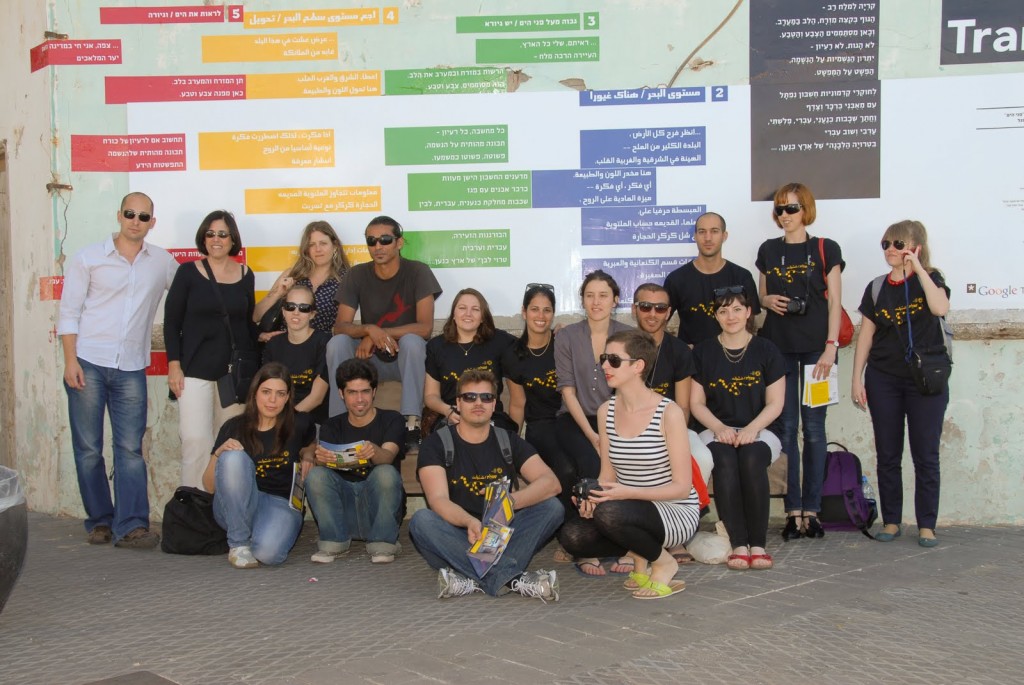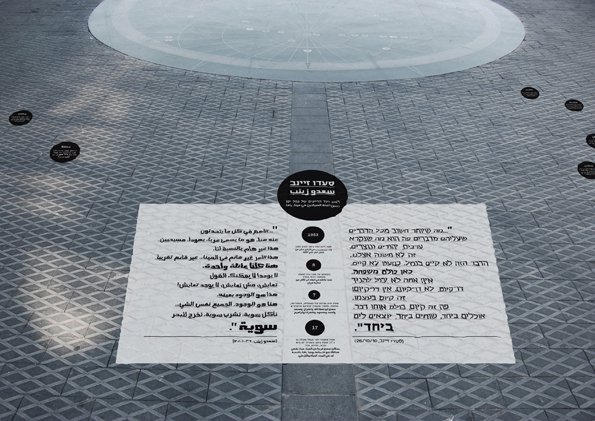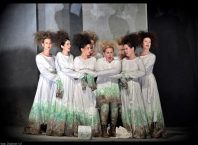
This is the last weekend to see Shibboleth – the site specific outdoor exhibit at Jaffa Port. Curated by Anat Katsir, and designed by students in the Visual Communications Department at Bezalel Academy of Art and Design, Jerusalem, the exhibit examines the term “Shibboleth” in its use as a means of distinguishing between ethnic groups based on linguistic differences. Integrating design and content, texts in Hebrew and Arabic have been printed onto outdoor surfaces throughout the port – the quality of the printing is striking and the different messages in the texts and mode of delivery open many issues for thought and discussion.
The exhibit opened on April 15, 2011 with a performance by System Ali – a multicultural hip hop group that sings in Arabic, Hebrew, Russian and English. Their song “Viena” was the inspiration for a work by Dan Greenberg located in the southeast corner of the southern warehouse (#14) the text wrapping around the building. The group dedicated the final number in their set to Jaffa Port:
In her opening address, Katsir recalled her first encounter with “Shibboleth” in its use as an ethnic marker. It was the title of a powerful work by Columbian artist Doris Salcedo at the Tate Modern in London (October 2007 – April 2008), in which the artist created a rupture that traversed the length of the Turbine Hall. Katsir, like many Hebrew speakers, was most familiar with “Shibboleth” as referring to flowers arising from the main stem – without individual flower stalks, its usage in relation to ethnic distinctions (based on the Biblical story of the conflict between the tribes of Gilad and Efraim) is more prevalent in other cultures.
Katsir explained that the project was part of a course called “Site Specific” she taught to fourth year students at Bezalel, with an emphasis on visual communications in urban spaces. The project is a good example of the potential for collaboration and mutual inspiration between technology and art. 3M developed a new line of stickers especially suited for outdoor use and textured surfaces, which enabled Katsir and her students to envision this project. Katsir said, “It would be hard to imagine a more suitable place for this project than the fascinating and charged space of Jaffa Port. A border between land and sea, between Tel Aviv and Jaffa, between the privileged and the disenfranchised; but like every border, the line does not only create a separation, it is also a meeting place. A meeting place between languages, cultures, scents and sights, past, present and future.”

A joint project of the Bezalel Visual Communications Department, 3M and Jaffa Port, the exhibition was organized with the help of: 3M Israel Ltd – an international company and leading innovator, Polakowski Ltd – Israel’s leading custom signs, road signs and signage systems manufacturer, and Elsop Fontisop Ltd – representing MIMAKI in Israel. The exhibit will close after April 30, 2011.





